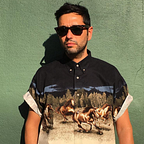Why are designer clothes so expensive?
Have you ever seen a piece of clothing that you loved, looked at the price tag, put the hanger down and immediately felt the need to leave the shop? It happens to all of us and in recent times the high-priced designer clothes has become even more noticeable. What once was expensive is now completely unattainable. Designer dresses going for £3,000, shirts for £800, trousers for £600, swimwear for £200, t-shirts for £500. Year on year there’s a leap in pricing on designer items — but what makes designer clothes so expensive?
Of course we are paying handsomely for the designer’s time and ‘brilliance’. Aside from that, we need to factor in the cost of licensing it. Next are the materials and labour costs. A shirt made in China or Bangladesh will be cheaper than one made in Portugal or Italy. Also, the better the material, the pricier the garment gets.
In an interview with Glamour magazine, Alber Elbaz, linked the high prices to a laborious design process: “I took all the bones out, and I stitch, and to get there, you know, it took me forever. It took me six or seven dresses to make one. And it’s time and it’s money and we are not doing it in offshore countries — we pay 65% taxes in France! It is so much work. Doing a collection for me is almost like creating a vaccine. Once you create the one vaccine, then you can duplicate for nine dollars and ninety-nine cents. But see if you can create it for nine dollars and ninety-nine cents, and the answer is no.”
However, it would be very naïve to think that we are only paying for the quality of the product and the artistry and time of the designer. Like a financial game of ‘Chinese whispers’, from sketch to shopping bag, the garment that we lust for goes through a chain of so many professionals and every time it changes hands it gets a markup.
Once the clothes are made they need to be sold. Big brands have their own shops and websites, emerging labels sell their collections in department stores and online fashion retailers. Either way, for clothes to reach shops, brands have to pay for warehousing and distribution.
Production and distribution is just the tip of the iceberg and account for a small percentage of the cost. There are also staffing costs, rent of lavish headquarters and shops.
The area that needs the biggest budget though is marketing. Brands spend millions on fashion shows, celebrity and social media endorsements, photographers, models, ads and ad placement in all the right magazines. So, most of the money that what we pay for clothes goes to the department that convinces us that we need those items in the first place.
Almost all brands sell to retailers. To cover their production costs and make a profit, brands will sell it for at least the double that they paid the factory to make it. Stores, on the other hand, have their own profit margins to worry about. So, when the item hits the shop floor, the item had a markup of at least twice what they paid the fashion house. For the mathematically challenged, that’s at least four times what the designer paid the factory initially.
Brand positioning also needs to be taken into account. Stakeholders set up prices to differentiate the market. There’s high street, contemporary (Kenzo, Carven, Tome, MSGM, etc.), lower luxury (Proenza Schouler, Altuzarra, Victoria Beckham) and high end (Chanel, Louis Vuitton, Hermes). The chosen prices put a brand in a certain bracket so retailers know how to categorise it and decide which designers sit next to each other. Basically a brand is as good as the company it keeps.
Just like the bad boyfriend of our youth, it’s this bad behaviour that turns brands so appealing. We want what we can’t have or what is hard to get. Brands remain luxurious and we remain devoted to them because they are exclusive.
Brands don’t mass-produce. They’ll make 100 garments instead of 1,000, which drives both the cost and the retail prices up. Printing small runs of items is more expensive than if you were to bulk manufacture. On the other hand, if it is exclusive and unattainable, it becomes desirable and customers are willing to pay for the product.
Personally, I don’t believe that all designer clothes’ quality is worth the price. That might be true for shoes, bags and tailoring. There’s the leather, the hardware, the patterns, the cut, the artisanship — and here, I find, is where the quality is more evident.
When it’s all said and done, high fashion prices can be so expensive because that’s what shoppers want to pay for it. Consumers will always equate cost to quality. It’s a fact for fashion as it is for food, gadgets, cars, and the list goes on. Some customers find joy in buying clothes that are not available to everyone or they simply want to have the same dress and bag as the one they’ve seen worn by a celebrity or seen in a magazine/movie/TV show.
Robert Duffy, co-founder of Marc Jacobs International, sums it up perfectly in a New York magazine piece, “Luxury is something you don’t need, it’s something you want. The bag of potato chips I ate for lunch today was a luxury.”
